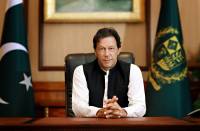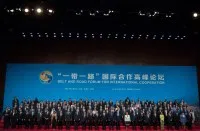Autarky is typically defined as an extreme variety of economic self-sufficiency while it is otherwise defined as operating on the basis of a closed economy. While the modern era has never seen a fully autarkic economy, the 20th century examples most readily singled out as examples of pseudo-autarky are Albania after Enver Hoxha severed ties with China in the 1970s and the DPRK (North Korea) during the 1990s.
By no means is the United States going down a road to anything even mildly approaching the DPRK of the 1990s or the last decades of Hoxho’s rule in Albania. That being said, Donald Trump is promulgating many of the principles of autarky in his push to get other countries to enact what he calls “fair trade” deals with Washington.
Trump’s weapons of choice in this battle for “fair trade” are tariffs and their slightly more extreme cousin sanctions. In the case of America’s long standing partner Turkey, Trump has resorted to a combination of sanctions against government ministers and large scale tariffs in his attempt to break Turkey’s will. However, unlike China, India, Japan, South Korea, the European Union, Canada, Mexico and even Russia, with which the US runs trade deficits, Turkey is one of the few major economies with which the US runs a trade surplus. Therefore, while in most instances, Trump is looking to inflict short term economic damage on both economic rivals and traditional partners for the “offence” of selling more to the US than the US sells to them, the example of Turkey shows that Trump might actually be aiming for something beyond establishing what he sometimes confusingly calls “fair trade”.
At present, a diverse set of nations are feeling the sting of American sanctions, tariffs or both. This has had the overall effect among the wider world, including among traditional US allies of spawning a rapid re-consideration of the reliability of a US trading partnerships vis-a-vis win-win partnerships with China and its One Belt-One Road initiative. Against this background, with China, Japan, Israel, both Korean states, Russia, India, Pakistan, Turkey, Syria, the entire European Union including Britain, Canada, Mexico and much of Africa falling on the wrong side of America’s new protectionist position, is it the case that the United States is now sanctioning itself in the sense that the US is isolating itself from the majority of the world rather than isolating certain countries from the US?
While Donald Trump continues to state that his trade war is designed to protect American interests, it appears that Trump’s definition of what his country’s interests are is quite a bit different than that which conventional wisdom would indicate. According to the orthodox view of Trump’s trade war, Trump is trying to pressure major trading partners (whether allies or rivals) to open up their markets to more US goods or else be penalised by having their access to US markets and/or financial institutions severely restricted.
An alternative view is that Trump does not in fact want to “win” the trade war in the aforementioned sense but instead wants to ready US industry for an era where it can become increasingly self-sufficient and therefore not reliant on the importing of goods from foreign states. In this sense, Donald Trump’s hostile attitude towards the modern realities of trade are derived not from a position of actively wanting to collapse the international consensus behind free trade but are rather derived from an attitude whereby the US will passively withdraw from this international consensus, thus leaving it to flourish under the de-facto leadership of China.
While this hypothesis may sound novel, this was essentially the strategy argued for by Ross Perot who ran as a surprisingly successful (by US standards) third party candidate in the 1992 and 1996 US Presidential elections. During his campaigns, Perot was not so much interested in working towards win-win solutions with current and potential trading partners. Instead, Perot proposed calling the bluff of America’s major trading partners whom he believed would never be able to engage in what today Donald Trump calls “fair trade”. In this sense, Perot was not fundamentally concerned with creating a new trading reality where bilateralism became more balanced across the globe but instead was willing to let the chips fall where they may which by his own admission would result in the US cancelling free trading deals with its partners and returning to a more closed economy where those who seek to purchase US goods would do so on a “take it or leave it” basis rather than one based on long term win-win negotiations.
Donald Trump’s campaign promises were incredibly similar to those which Perot made in the early 1990s. While Perot was very upfront about his desire not to necessarily have any kind of free trading deals with other nations (believe that under the circumstances win-win deals were impossible without sacrificing domestic industrial wages), Trump seems to be pivoting from a position which suggests that it is possible to force other nations to open their markets to US goods to one that either does not care what other nations do among themselves so long as the US attains a more autarkic economic status.
While China’s long planned historic opening of its own economy could have been an opportunity seized by Trump to embark on the win-win formula that in Trump’s lexicon is known as “fair trade”, Trump instead decided to escalate his tariff war against China at a time when Beijing is more prepared than ever before to have foreign goods on its shelves, including those from the US. The result has been that while China moves to create more open, free and fair deals with much of the world, the US is being left out.
Perhaps though being “left out” is exactly where Trump wants to be. If extrapolated to its logical extent, the Perot trading mentality meant that US goods would be targeted first and foremost at the US domestic market which by “cutting off competition” would allegedly become more competitive. While a closed economy is hardly a competitive one, a large enough domestic economy could survive and in the case of the US perhaps survive quite well or at least “well enough”. After all, China’s large domestic economy (now larger than that of the US) could be largely self-sufficient at this stage if it wanted to be. However, China’s goal of seeking long term growth and diversification has led to China becoming the foremost exponent of free trade.
Japan however is a different story. While Japan has been happy to sell its goods to foreign powers even when in the 1980s the country famous sold its goods at a loss due to Japan’s overly strong currency, today, the US under Donald Trump appears to be taking cues not from open China but from the comparatively closed Japanese economic model. The US, like Japan is still a major industrial power but one where recent decades have not witnessed marked growth. Under Trump the US economy is growing strongly, but without the ability to competitively trade throughout the world, it will eventually plateau in the way that Japan’s did in the 1990s.
But just as Japan managed to weather the storm in its own way, the US may be looking towards becoming the next limited Japan rather than develop a win-win free trading partnership with China that could see mutual growth for decades to come. Under such a circumstance, the US would be largely reliant on its own domestic market combined with nations who will buy American goods in areas where there are no preferable alternatives.
While Japan is certainly not Autarkic, the country’s semi-closed economy has been a case study in terms of cutting off potential for growth but nevertheless remaining a consistently strong economy with high living standards for its people. If this is the reality that Trump is aiming for, he is in fact making the “right” moves in so far as his policy positions will eventually fulfil their aim.
The more important question is, are Americans willing to remain strong but stagnant while China and its more forward thinking partners continue to expand, diversify and innovate? For Donald Trump, it would appear as though he does not care about long term expansion, diversification and innovation. He does not really want the US to rival China - he instead wants the US to be the next Japan.
Because of this, while the US will eventually lose its number one economic position in the world and while Japan looks to be overtaken at its number three position by more competitive economies, China and those following a more Chinese style model will continue to grow. This may well be the true course that Trump desires.




